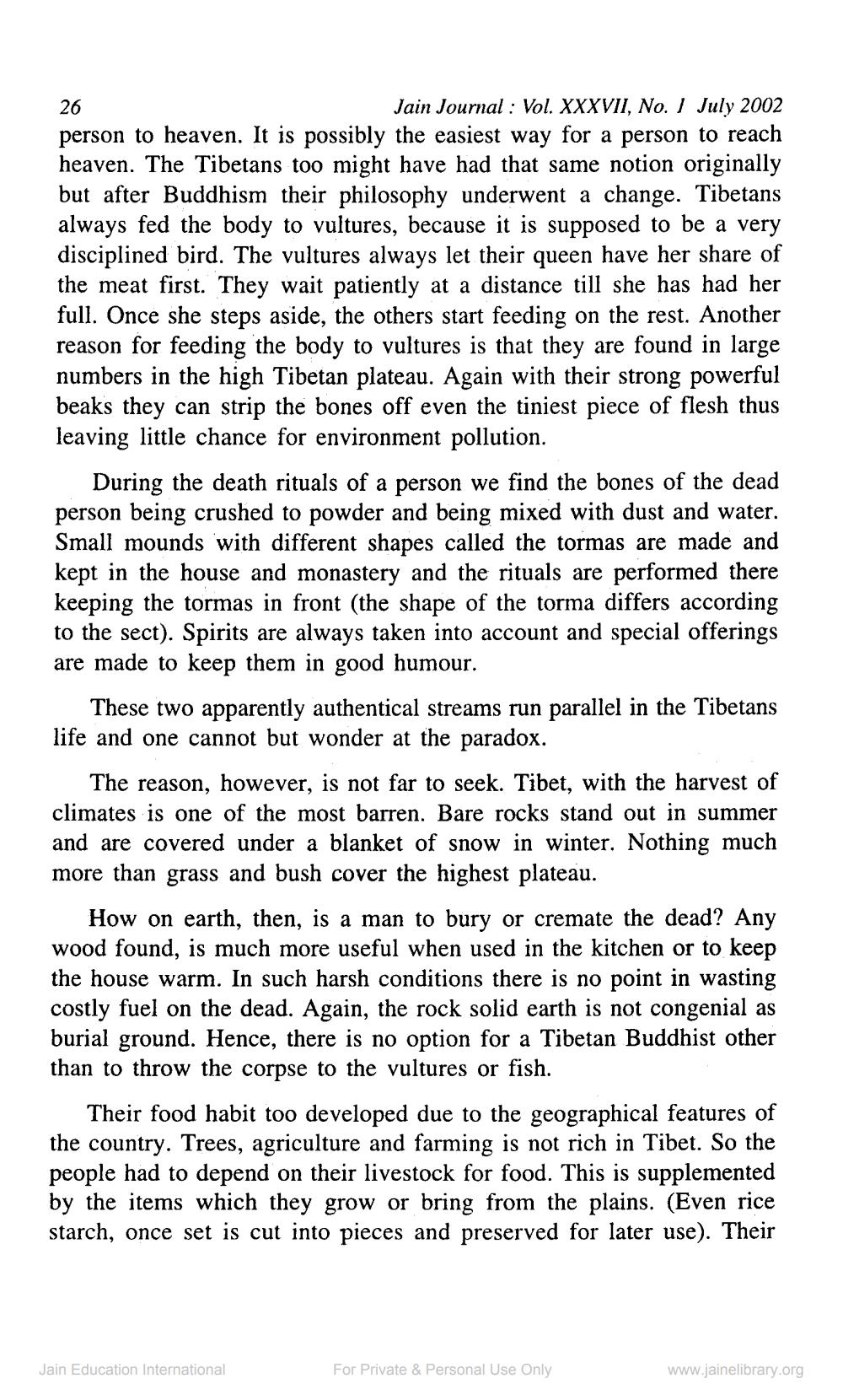________________
26
Jain Journal: Vol. XXXVII, No. 1 July 2002 person to heaven. It is possibly the easiest way for a person to reach heaven. The Tibetans too might have had that same notion originally but after Buddhism their philosophy underwent a change. Tibetans always fed the body to vultures, because it is supposed to be a very disciplined bird. The vultures always let their queen have her share of the meat first. They wait patiently at a distance till she has had her full. Once she steps aside, the others start feeding on the rest. Another reason for feeding the body to vultures is that they are found in large numbers in the high Tibetan plateau. Again with their strong powerful beaks they can strip the bones off even the tiniest piece of flesh thus leaving little chance for environment pollution.
During the death rituals of a person we find the bones of the dead person being crushed to powder and being mixed with dust and water. Small mounds with different shapes called the tormas are made and kept in the house and monastery and the rituals are performed there keeping the tormas in front (the shape of the torma differs according to the sect). Spirits are always taken into account and special offerings are made to keep them in good humour.
These two apparently authentical streams run parallel in the Tibetans life and one cannot but wonder at the paradox.
The reason, however, is not far to seek. Tibet, with the harvest of climates is one of the most barren. Bare rocks stand out in summer and are covered under a blanket of snow in winter. Nothing much more than grass and bush cover the highest plateau.
How on earth, then, is a man to bury or cremate the dead? Any wood found, is much more useful when used in the kitchen or to keep the house warm. In such harsh conditions there is no point in wasting costly fuel on the dead. Again, the rock solid earth is not congenial as burial ground. Hence, there is no option for a Tibetan Buddhist other than to throw the corpse to the vultures or fish.
Their food habit too developed due to the geographical features of the country. Trees, agriculture and farming is not rich in Tibet. So the people had to depend on their livestock for food. This is supplemented by the items which they grow or bring from the plains. (Even rice starch, once set is cut into pieces and preserved for later use). Their
Jain Education International
For Private & Personal Use Only
www.jainelibrary.org




